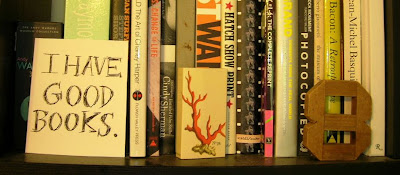 Luc Sante's portrait of New York City in the 19th and early 20th centuries is quickly becoming a classic. It explores the city's, for lack of a better term, "seedy underbelly" in four parts, focusing on layout and topography, sources of illicit recreation, people in positions of power, and people living on the edges of society.
Luc Sante's portrait of New York City in the 19th and early 20th centuries is quickly becoming a classic. It explores the city's, for lack of a better term, "seedy underbelly" in four parts, focusing on layout and topography, sources of illicit recreation, people in positions of power, and people living on the edges of society.In his essay "My Lost City," which appears as an Afterword in this edition of Low Life, Sante says that "Instead of disappearing, local history has been preserved as a seasoning," which has always struck me as a pretty apt description. Vestiges of the city's past remain in the form of architectural details or old signs (like the faded ghost billboards you sometimes see on sides of buildings), so you can almost imagine what it might have been like. And at the same time, it seems unfathomable to imagine the New York depicted in this book.
 There are a number of black and white photographs reproduced throughout--above depicts a lodging house situated on a barge, and hobos riding atop train cars. Ah, the good old days...
There are a number of black and white photographs reproduced throughout--above depicts a lodging house situated on a barge, and hobos riding atop train cars. Ah, the good old days...

No comments:
Post a Comment